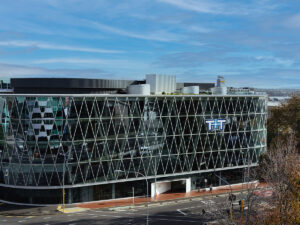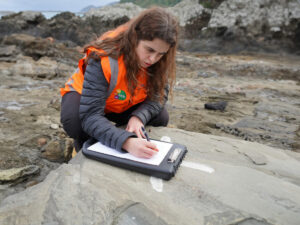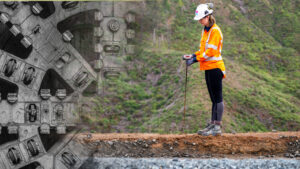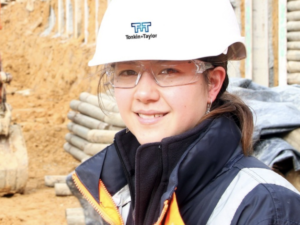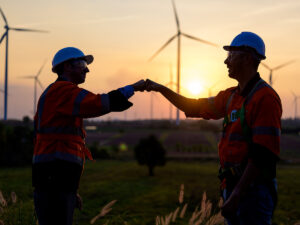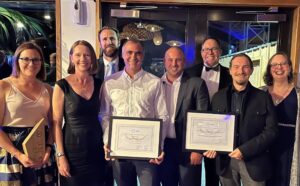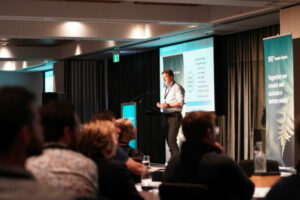By Sze-Fei Peng – Principal Environmental Engineer/Sector Lead – Waste & Resource Recovery, Tonkin + Taylor
In a Victorian first, Melbourne’s Clarke Road metropolitan closed landfill site is set to be transformed into a utility-scale renewable energy facility. In preparation for this new infrastructure, the property owner collaborated with Tonkin + Taylor (T+T) and Chadwick Geotechnics to repurpose the site and mitigate the environmental risks.
The Clarke Road landfill-to-a renewable energy hub (utility scale battery, solar and heavy EV charging facility) project has successfully obtained a planning permit and is currently in the design stage, with construction expected to commence in 2024.
But in order for the project to go ahead, the existing site had to be rehabilitated. In a Victorian first, biosolids were used to create an innovative landfill cap to manage surface water flow, minimise leachate generation and serve as a foundation for renewable energy generation.
During its time as a landfill site, gas generated by the waste materials deposited at the site was collected and used for power generation, providing a valuable source of energy. The landfill gas-to-energy facility operated at the site for over 25 years, but over time, landfill gas generation declined and power generation was no longer viable.
T+T and Chadwick Geotechnics, a specialist geotechnical testing company, were engaged to assess, design and implement the transition of the active landfill gas extraction system to a passive system to ensure landfill gas risks to the environment were safely managed. This rehabilitation was crucial to ensuring the new landfill-to-renewable energy hub project can go ahead.
Plan of action
At the same time, the Clarke Road landfill site was subject to an EPA abatement notice, which prompted the rehabilitation of the site itself and an assessment of the site’s potential environmental risks. T+T was asked to undertake this assessment of the site as a whole, including whether or not the existing landfill cap was in good condition.
The team found that the existing cap was of sufficient integrity and only required the surface grade to be improved, rather than replaced. A design was put together for reprofiling the site to enhance water drainage, prevent leachate generation and landfill gas surface emissions; all crucial steps in preparing the ground for the energy hub infrastructure.
Embracing biosolids
The reprofiling of the site required considerable depth and volume (over 600,000 cubic metres) of fill. As virgin fill is highly sought-after, expensive and contributes to the depletion of finite natural resources, an alternative was needed. Biosolids were identified as the ideal solution as they presented cost-effective advantages and aligned with the project’s environmental ethos.
Sourced from Melbourne Water Corporation (MWC), these biosolids’ clay-rich composition made them well-suited for capping material. As they were locally available this also minimised transportation emissions. Being a byproduct of wastewater treatment, biosolids were costly to dispose of and took up valuable landfill space. The utilisation of these biosolids stimulated a circular economy by transforming waste into a valuable resource.
Navigating challenges and embracing collaboration
Biosolids perform well when capped over and surrounded by inert material, however they take on a slushy consistency when wet and turn to dust when dry. Meticulous planning, operational control, and adaptability was crucial to ensure that they were not impacted by weather conditions during construction.
The biosolids also needed to be clay rich. T+T carefully planned around supply and availability of material. The application of biosolids in this context was unprecedented in Victoria. It therefore necessitated special exemptions from the EPA, as it deviated from standard landfill rehabilitation guidelines.
Gaining the exemption required extensive collaboration between T+T, MWC, Progress Earth and EPA. This process involved demonstrating the material’s suitability and compliance with EPA guidelines, showcasing a successful model of public-private partnership.
By repurposing waste materials and transforming a landfill site into a renewable energy facility, the Clarke Road landfill-to-renewable energy hub project elevates the standards of sustainable development. It serves as a model for similar initiatives worldwide, demonstrating that with creativity, collaboration and commitment, environmental challenges can be turned into opportunities for a greener future.
To learn more about our Waste & Resource Recovery services, please contact our team by emailing australia@tonkintaylor.com.au or calling +61 3 9863 8686.
(This article was originally published in the February edition of Utility magazine.)


